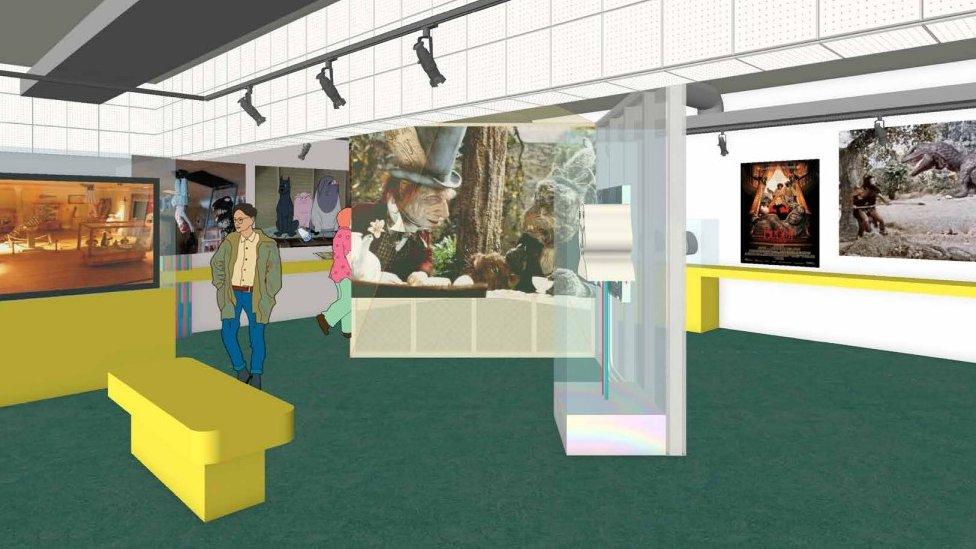Bradford museum reveals pioneering pet photographs
- Published
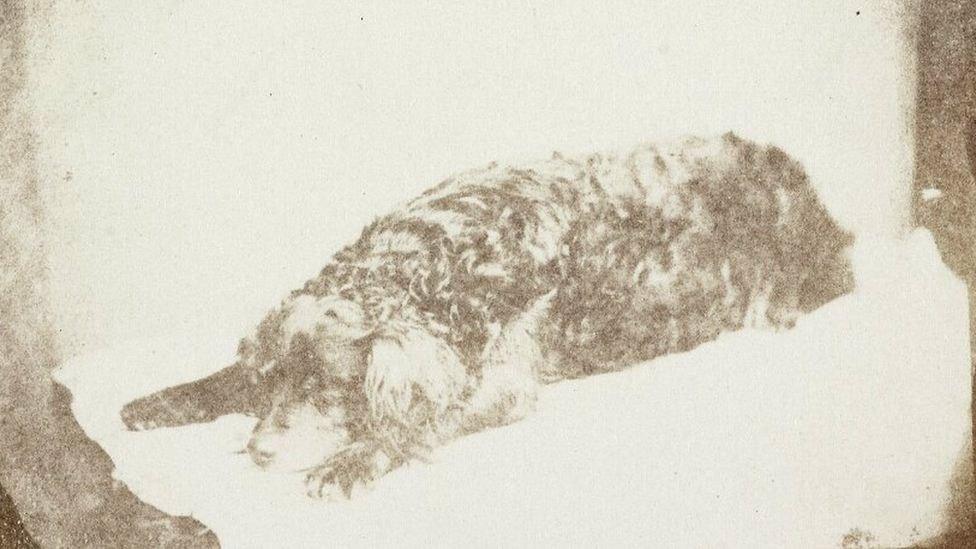
Famous author Mary Mitford was an early adopter of the pet portrait - including this one of her dog
What are believed to be some of the earliest pet portraits to be caught on camera have been revealed by Bradford's National Science and Media Museum.
Among the images is a print of a cat dating back to the 1830s by photography pioneer William Henry Fox Talbot.
The museum's collection also includes an 1847 photo of author Mary Mitford's dog.
The famous writer's canine is said to have laid still on the floor for four minutes for the image to be captured.
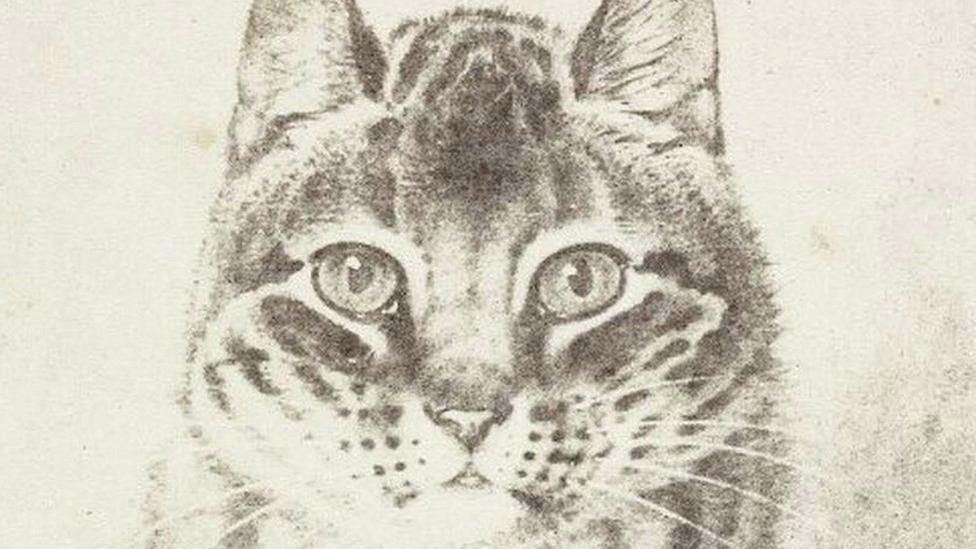
Pioneer William Henry Fox Talbot used negatives to create photographic images, known as calotypes
Fox Talbot's image of the cat was made by creating "positive" prints from one negative - a technique he called the calotype process, after the Greek word "kalos", meaning beauty.
The cat picture he used was a reproduction of "A Favourite Cat" by JM Burbank, an artist who exhibited animal pictures during the 1830s in Britain.
Ruth Quinn, curator of photography and photographic technology at the National Science and Media Museum, said the images explored how different photographic processes had been used over the years to permanently capture images of beloved pets.
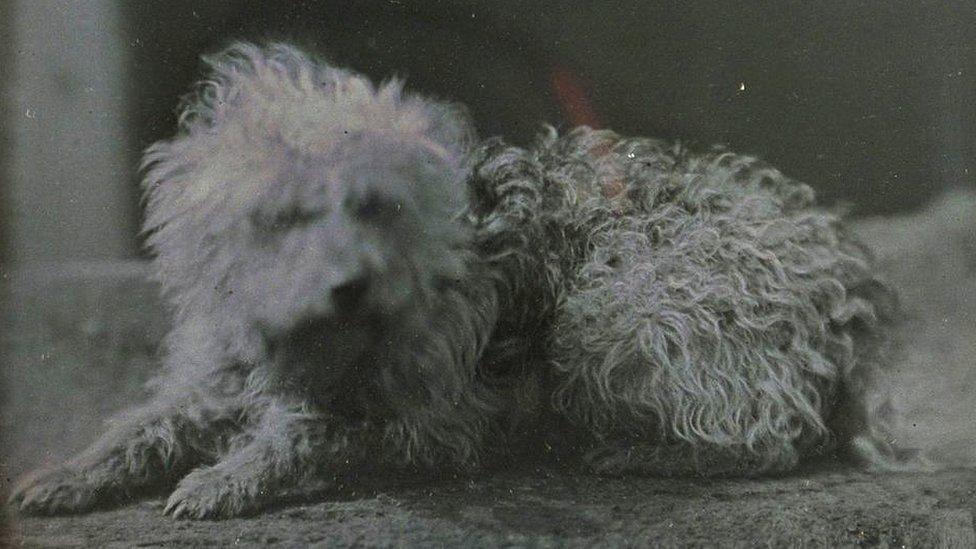
This dog, caught on a daguerreotype portrait, clearly did not want to stay still for the camera
Ms Quinn explained that calotypes were not the only photographic format on the market in the 1840s.
She said one image in the collection, of a lively dog who clearly did not wish to stay still for any length of time, was instead created using a method known as "daguerreotype".
The man behind the technique, Louis Jacques Mande Daguerre, claimed to have invented photography in France in 1839.
Ms Quinn said: "Daguerre developed a way of taking pictures using a polished silvered plate and a camera. This produced a single image printed directly onto a plate with astonishing clarity, named the daguerreotype."

So called "cabinet cards", like this one of a cat, became a popular way of sharing images of pets
Another big photographic trend in the early days was the so-called "cabinet card", a small image on card designed to be shared with family and friends.
"These days, we're more likely to snap our favourite pets using our phone cameras than time-consuming film processes - but the impulse to capture photos of our furry friends remains the same," Ms Quinn said.
The cabinet cards had a distinctive brown hue and were created using a thin sheet of paper and egg white.
The National Science and Media Museum in Bradford is currently closed until summer while it undergoes a £6m revamp.
However, experts from the museum have continued to share examples of what is contained within its collection online.

Follow BBC Yorkshire on Facebook, external, X (formerly Twitter), external and Instagram, external. Send your story ideas to yorkslincs.news@bbc.co.uk, external.
Related topics
- Published16 June 2023
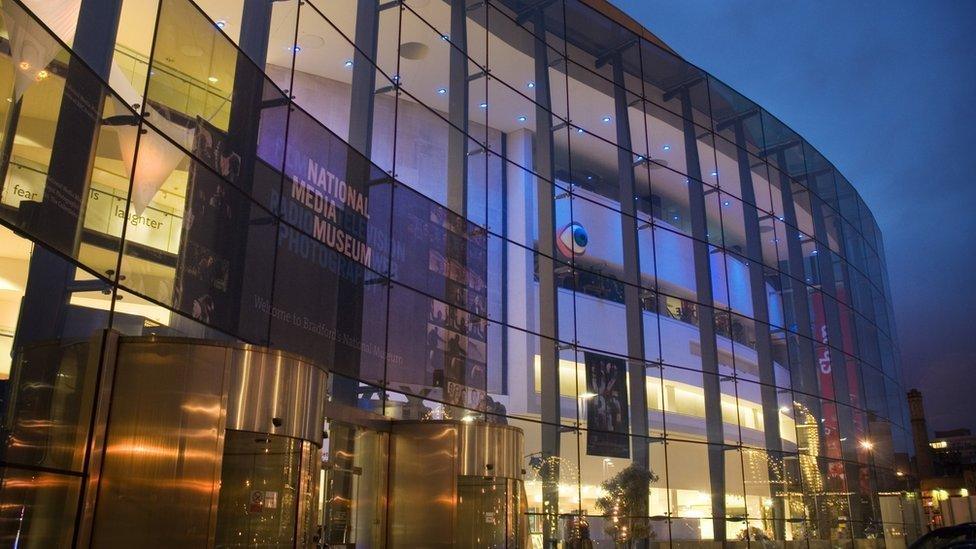
- Published13 January 2023
